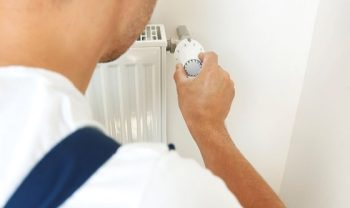A broken water heater thermostat is a straightforward issue to resolve in just five easy steps. If you want to fix your own water heater thermostat, just follow these easy steps. Before you start any electrical work, make sure the main breakers are off. Contact our team right away to completely avoid any risk.
It is best to hire a professional if you are uncomfortable working with live wires or plumbing that uses pressurized water. Your complete satisfaction is always our top priority at J.O. Plumbing. For all of your water heater thermostat issues, contact us.
When Should Your Water Heater Thermostat Be Serviced?
You might have a thermostat issue if you notice that the water from your faucet isn’t as hot as it used to be. Since an inefficient heating mechanism is always running, a broken water heater thermostat can result in higher electricity costs. Additionally, it shortens the unit’s lifespan, so check it as soon as possible!
Your water heater has a temperature and pressure release valve. Your water is too hot. In the event of a system failure, this safety feature ensures that the boiler can safely vent accumulated gases. Over time, sediment can build up in the valves and cause them to stick or stay closed. Internal steam pressure can rise as a result, inevitably resulting in an explosion of steam and boiling water. Your water may be steadily getting hotter as it flows through the system if the valve is stuck open. You can resolve this with the assistance of a skilled technician.
The electric current completes a circuit to the water heater’s heating mechanism by passing through two wires when the circuit breaker is first turned on before turning on the hot water faucet. Electricity will not flow through those wires, and there will be no heat produced if the thermostat does not detect that the room is not hot enough.
Water Reheats Too Slowly If you turn on the hot water in the shower and it doesn’t get hot in a few seconds, the thermostat probably isn’t letting enough electricity get to the heating mechanism. The water takes longer than usual to reheat because there is no heat.
How to Repair a Water Heater Thermostat:
1. How to Turn Off Power at Main Breakers Set the thermostat cover aside after removing it.
2. Take care not to pull the thermostat’s wires by their thin coating by unscrewing or unclipping them. Utilize a thin set of tweezers or needle-nose pliers if you are unable to detach them with your fingers.
3. While you are working on the heater, turn off the power from your circuit breakers so that no electricity will flow through it.
5 Steps to Repair a Water Heater Thermostat: Both the upper and lower thermostats can be found.
2. Check to see if they have power.
3. To determine if the malfunctioning thermostat will function, press the button to reset it.
4. If the upper system is without power, replace the thermostat.
5. If you have power to your upper system but no hot water, you should replace the upper heating element.
Install a new thermostat
1. Use a pair of pliers or your hands to remove the defective thermostat.
2. Take this broken thermostat to a home center, plumber’s wholesaler, or hardware store. You can find a variety of models of water heater thermostats tailored to your specific unit at these locations.
3. Using either your fingers or a wrench or pliers, screw the new thermostat into place in the same way that you removed the broken one.
4. In the same spot where you removed the wires in Step 1, reconnect them to the thermostat. When you turn on your power again, make sure to attach them securely so that electricity can complete a circuit through the system.
At Breakers 1, turn on the power again.
1. Turn back on the power after testing the new thermostat to make sure it works.
2. To reset the thermostat, run a little hot water from a tap after the water heater has finished heating up.
3. Look everywhere in your house for hot water. The hot water should be back to how it was before if you did everything correctly.
The Negative Steps You Should Avoid 1. When the power is on, do not touch any wires. Electricity is risky and can cause death if handled improperly.
2. Never combine thermostat components from different water heaters; this could be dangerous and cause damage to your unit.
3. If the thermostat in your water heater is broken and you don’t know how to fix it, you should hire a professional with the right tools and experience to fix it safely.
When to Replace or Repair a Water Heater Thermostat
If your thermostat is leaking, you should not try to fix it on your own because there are risks involved. A unit that is leaking can cause a number of serious safety risks that should only be handled by a trained professional.
Water heater leaks can damage floors and walls and pose a serious safety hazard due to the possibility of electrocution for anyone in the vicinity of the appliance when it is powered on.
Turn off all appliances that are connected to your water heater if you smell gas around it. Contact J.O. Plumbing as soon as possible to have your broken water heater thermostat replaced or repaired in the event of any kind of leak.
For top-notch thermostat repair, get in touch with our team right away. J.O. Plumbing has been the go-to plumbers and heating technicians for a long time. We are able to assist you with any issue, from a leaking toilet or sink to complicated heating or cooling issues.




